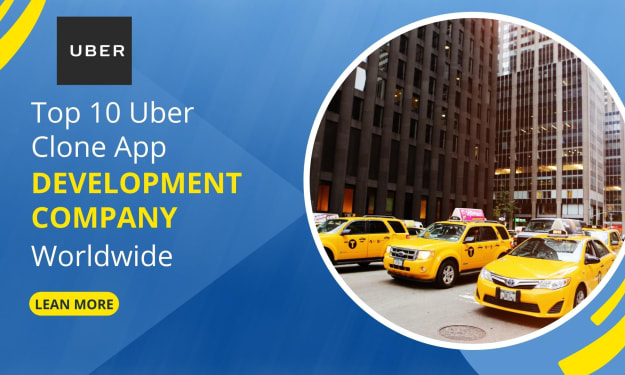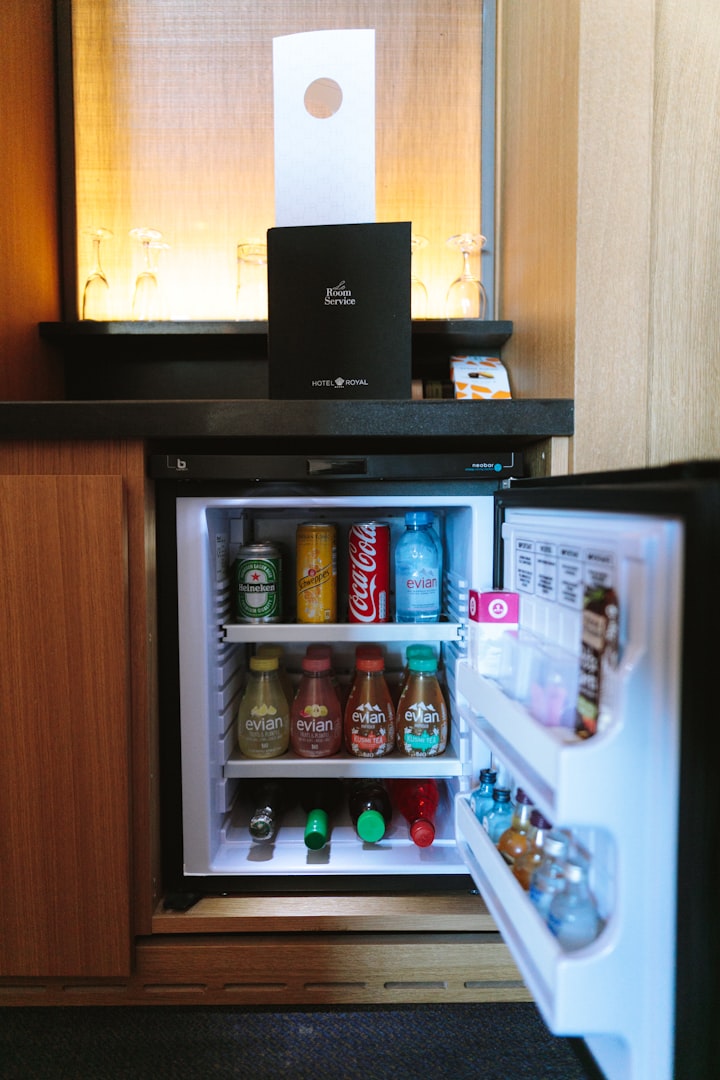Start Your Ride-Hailing Success with the Uber Clone Script
Uber Clone Script

With the Uber Clone Script, you can jumpstart your ride-hailing business.
Booking a taxi was a stressful and time-consuming chore before introducing of smartphones and mobile applications. Previously, riders had to go to taxi stands to order a cab, and it was extremely difficult to locate a taxi driver ready to take them to their desired location. To address these issues, developers and inventors collaborated to design an application that addresses the problem quickly. Mobile phones have become an integral part of our everyday lives; everything from food to grocery shopping is now possible through a mobile application. Ride-hailing companies recognized and implemented this revolutionary transformation.
The invention of an application that connects the rider and driver kicked off the ride-hailing revolution. In the market, there are several large brands and startups. You'll need to create your clone app. Many app development organizations and taxi app development teams have successfully produced uber-like solutions. Decide your target location, audience, and budget before designing your ultimate app.
What is the operation of an app like Uber?
Let's look at the workflow of a taxi app before we go into app development.
Users register for the app using their social network handles after downloading it.
They can request nearby taxis after providing the relevant pick-up and drop-off locations by enabling their location.
Drivers can accept user requests and use the in-app navigation feature to go to the user's location.
After completing the ride, consumers can pay for the service or any app's payment method.
Both drivers and users can rate and discuss their ride experiences in ratings and reviews.
This is the standard procedure for any taxi app. We'll go into development now that we understand how ride-hailing applications work.
What are the various stages of the app development process?
Stage 1: Identifying your target market and conducting market research
Your app should cater to a specific group of users who use it frequently. Even though ride-hailing apps are generic, creating them with a specific target audience in mind is preferable. Working professionals in need of a cab, for example, could be your target demographic. They'll almost certainly require a taxi to get to work every day, ensuring the app's long-term viability.
After you've determined who your target audience is, you'll need to learn about their expectations. This can be accomplished by conducting market analysis in your area. The market research provides valuable insight into market demands. Furthermore, you'll learn about the weaknesses in the existing program, allowing you to avoid them in your creation. Extensive market research is required to develop a marketable product.
Stage 2: Documenting the app and creating the UI/UX
App documentation entails determining the app's technical needs. This stage identifies the app's complete parameters, such as the development team needed, the schedule needed, etc. All of these requirements are documented and followed throughout the development process.
After you've finished documenting, you may start designing the app's outline. UI/UX influences the user experience. Keep your design simple. A simple, unique app with a user-friendly layout can reach greater heights in the market.
Stage 3: Front-end development
An essential step of app development is now underway: front-end development. It entails the integration of many features and functions. During this stage of app development, your app takes shape. Some of the primary features of an Uber clone app include:
- Navigation within the app
- There are several payment options available.
- Chat/calling capabilities within the app
- Estimator of Fare
- Masking of phone calls
- Ratings and reviews, for example.
Make sure your app is one-of-a-kind and stands out from the crowd. The more distinctive your app is, the more popular it will be.
Stage 4: Back-end development
You must successfully manage servers and databases for your app to maintain site traffic. This step is critical for securely encrypting user and driver information. This back-end development is crucial to the app's privacy. This stage also includes the development of the admin panel. In addition, numerous panels have been designed to maintain and manage the app seamlessly. Some of them are as follows:
- Management of the fleet
- Management of misplaced items
- Dispute resolution
- Management of dispatchers, etc.
Stage 5: Deployment and support of the app
You distribute your app across many platforms, like Android, iOS, and others, after being developed. There is no such thing as a defect-free app. Even after thorough testing, the software may include flaws. You should have a support team ready to handle and resolve these app difficulties. Furthermore, you must be available to answer client questions 24 hours a day, seven days a week. This is only achievable if you have a ready-to-help inbound support crew. According to current market trends, regular upgrades are required to remain competitive for an extended time.
Related Blog: Advantages of Using an Uber Clone App
How much does an Uber-clone app cost to develop?
The Uber Driver App is the most popular cloning object, despite being the most expensive and time-consuming to create. Apart from that, all of the most popular digital trends, such as Tinder, Instagram, and Snapchat, are mobile apps.
This essay will assist you in comprehending the importance of a similar endeavor.
1. Basic Capabilities
To create an Uber-clone app, you must first create a list of all the basic functional parts. The functions of the application in question are as follows:
- A map showing traffic routes and a GPS navigation gadget
- System of registration and matching
- Notifications and communication methods
- Information on the car and the driver's payment system
- Rating
Let's look at each of the list's elements and discuss them in further depth.
A GPS navigation device, as well as a map with traffic routes, are required.
The driver and the passenger are located via GPS in an Uber-clone application. They need maps and locations to find each other easily, and a routing server is utilized to create a riding path and determine how long it would take. It's best to utilize platform-specific maps, such as Google Maps for Android.
2. System of Registration and Matching
Customers are frequently offered numerous options for registration, and a phone number is requested in Uber-clone applications. In the case of drivers, the procedure is more complicated. It entails going to the transportation company's office and supplying them with the relevant paperwork before the registration.
Passengers can use the matching system to find a free driver, and drivers can quickly accept passenger requests. The algorithm must take into account the driver's distance from a possible passenger as well as the driver's status («Busy» or «Free»). The Uber driver has 15 seconds to accept the request through the app after receiving it.
Although some Uber-clone services let users choose their driver, it is more practical to allow the system to do so automatically. Passengers will save time by not having to call a taxi, and all pool drivers will receive a sufficient number of requests.
3. Notifications and Communication Methods
There are various methods for informing passengers that their ride has arrived. The simplest option is to send a text message or a push notice to the traveler. Sending push notifications is a more convenient but less reliable alternative than SMS. It is possible that the passenger will not receive the push message or will not even notice that it has been turned off due to various factors (bad connection, overloaded phone memory, etc.). Uber and its competitor Lyft use the short message service.
It's also a good idea to include the driver's phone number in the content of the message. If something goes wrong or the passenger cannot locate the vehicle, they will be able to contact the driver. The application contacts the telecommunications service provider to send a text message to the passenger. Uber works with Twilio, while other companies in the international market, such as Plivo, Nexmo, Sinch, and others, offer similar services. Otherwise, you can look for a well-known company in your area.
Touching a phone handset symbol near the name in some Uber-clone apps allows you to call the driver:
4. System of Payment
Uber-clone applications prefer bank transfer payments because they are faster and more dependable than paying cash. Nonetheless, they must always keep the target consumer's needs in mind. In Ukraine, for example, Uber-clone apps accept cash payments. In some countries, Uber itself provides this service:
Providing multiple payment options at once will help you attract more customers. The following options are available in popular applications:
Credit cards, Paypal, American Express points, Apple Pay, and Google Wallet, are all accepted by Uber.
Credit and debit cards, PayPal, Apple Pay, and Google Wallet, are all accepted by Lyft.
Hailo, Apple Pay, and bank cards.
Finally, how much would it cost to create an Uber-clone app to solve the problem? One platform takes roughly 500 hours to construct. It takes roughly 200 hours to complete the design. As a result, an Uber-clone application converted for iOS will cost around $27000 as a minimum viable product (MVP). The cost of an Android version will be less: $22500. The application takes four months to build.
A «well-polished» product ready for launch costs 3-4 times as much as an MVP, and development takes 3-4 months longer.
All of these figures and estimates are, of course, estimates. The final worth of developing an Uber-clone service will be determined by each business's scale and unique characteristics.
To summarize,
App development is a time-consuming process. Executing each stage following, you save money. Ride-hailing business is expected to increase exponentially. You may profit from this booming ride-hailing app business with a well-developed best-in!






Comments
There are no comments for this story
Be the first to respond and start the conversation.